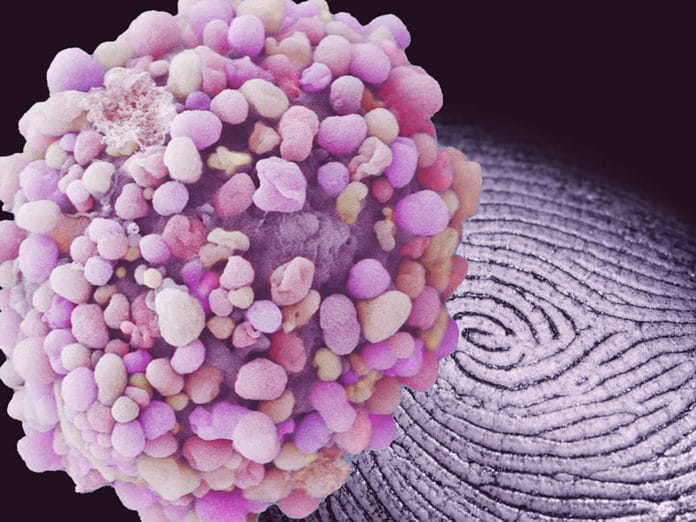MIT scientists have developed a new technique that determines whether the developing tissues are more like solid, liquid, or gas. In other words, the way tissue’s cells are arranged is served as a fingerprint for the tissue’s phase.
Scientists dubbed this method as ‘configurational fingerprinting.’ It can help scientists track physical changes in an embryo during its development. What’s more, it can be used to determine a tumor’s physical state in cancers.
Scientists noted, “Doctors can one day match an image of a tumor’s cells with a cellular fingerprint to quickly determine a tumor’s phase, and ultimately cancer’s progression.”
Ming Guo, associate professor of mechanical engineering at MIT, said, “Our method would allow a very easy diagnosis of the states of cancer, simply by examining the positions of cells in a biopsy. We hope that, by simply looking at where the cells are, doctors can directly tell if a tumor is very solid, meaning it can’t metastasize yet, or if it’s more fluid-like, and a patient is in danger.”
“Real issues are never perfectly ordered. They are mostly disordered. But still, there are subtle differences in how much they are disordered.”
Scientists started with various types of images. Using the software, they mapped triangular connections between a tissue’s cells. Unlike equilateral triangles in a perfectly solid, the maps produced triangles of various shapes and sizes, indicating cells with a range of spatial order.
They measured two critical parameters for each triangle. Those parameters include volumetric order, the space within a triangle, shear order, or how far a triangle’s shape is from equilateral.
The first parameter indicates a material’s density fluctuation, while the second illustrates how prone the material is to deform. These two parameters, they found, were enough to characterize whether the tissue was more like a solid, liquid, or gas.
This new fingerprinting technique has been tested in different scenarios. The first was a simulation wherein they demonstrated the mixing of two sorts of molecules, which increased gradually. For every concentration, they mapped the molecules into triangles, then, at that point, estimated every triangle’s two parameters. These estimations determined the phase of the molecules and had the option to duplicate the advances between gas, liquid, and solid that were expected.
Guo said, “People know what to expect in this very simple system, and this is what we see exactly. This demonstrated the capability of our method.”
Scientists then applied their method in systems with cells. They saw videos, taken by other researchers, of a growing fruitfly wing. Thanks to this method, they were able to identify regions in the developing wing that morphed from solid to a more fluid state.
Guo said, “As a fluid, this may help with growth. How exactly that happens is still under investigation.”
Scientists also grew small tumors from human breast tissue cells and watched as the tumors grew appendage-like tendrils — signs of early metastasis. When they mapped the configuration of cells in the tumors, they found that the noninvasive tumors resembled something between a solid and a liquid, and the invasive tumors were more gas-like. At the same time, the tendrils showed an even more disordered state.
Guo said, “Invasive tumors were more like a vapor, and they want to spread out and go everywhere. Liquids can barely be compressed. But gases are compressible — they can swell and shrink easily, and that’s what we see here.”
Scientists are now working with samples of human cancer biopsies, imaging, and analyzing to hone their cellular fingerprints.
Guo said, “Eventually, mapping a tissue’s phases can be a quick and less invasive way to diagnose multiple types of cancer.”
Their findings are reported this week in the Proceedings of the National Academy of Sciences.
